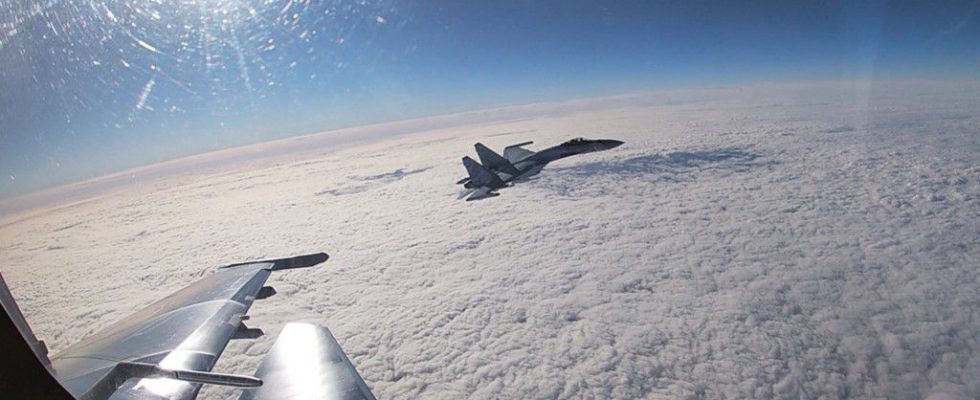If the Russian army has used its air force little since the start of the invasion of Ukraine, due in particular to a fierce anti-aircraft defense provided in Kiev, reconnaissance missions are legion. On Wednesday April 26, Germany and Great Britain intercepted three Russian planes over the Baltic Sea, as part of a NATO surveillance mission in the airspace above the States. Baltics. “Reconnaissance flights intercepted. German and British Eurofighters were alerted to identify three military aircraft. The two SU-27 Flankers and a Russian IL-20 were again flying without transponder signals in international airspace over the Baltic Sea,” the German Air Force tweeted. The last machine mentioned, the IL-20 (or Ilyushin IL-20), specializes in observation, listening and taking aerial photos.
Such an interception in this area is not new: on April 17, the same plane had been identified by the two countries. On Tuesday, the Norwegian army announced for its part that it had followed a Russian squad composed of two Tu-160 Blackjack strategic bombers, two Il-78 Midas tankers and three MIG-31 Foxhound fighters, in international airspace in Barents Sea.
Practices from the Cold War
These incidents involving Russian planes and aircraft from NATO countries have multiplied in recent years, even before the start of the conflict in Ukraine. “In reality, this has been a very common practice since the Cold War. Soviet or NATO planes were going to sort of watch what is happening on enemy territory”, recalls for L’Express General Jérôme Pellistrandi , editor-in-chief of the journal National Defense. On May 1, 1960, an American spy plane, the Lockheed U-2, was shot down by Soviet air defenses, for example. On board, pilot Francis Gary Powers, safe and sound, was arrested and convicted. A year and a half later, he will be exchanged for another spy… this time Soviet.
The end of the cold war and the normalization of relations will not however put an end to these observation flights, the objective of which is a common knowledge. But for several years, “the intentions are more hostile, and the process of seeking information is added a little provocation”, continues Jérôme Pellistrandi. These practices can sometimes lead to risky situations. On March 14, a Russian plane intercepted a US Air Force surveillance drone in international airspace above the Black Sea. The incident led to a brief escalation of tensions between Washington and Moscow, in the context of the war in Ukraine. “Just imagine if there had been losses. Through this kind of confrontation, we also see the great composure of the crews so as not to pull the trigger”, analyzes the general.
However, these practices are necessary on both sides. “They make it possible to update the maps, to know if a new offensive is planned, but also to provide information on the organization chart of the armies”, specifies General Dominique Trinquand, former head of the French mission to the UN. And this information war is not confined to the air domain. According to Nordic media revelations on April 19, Russia would have recently used several dozen military and civilian vessels to scout the North Sea for possible sabotage actions in Northern European waters.
